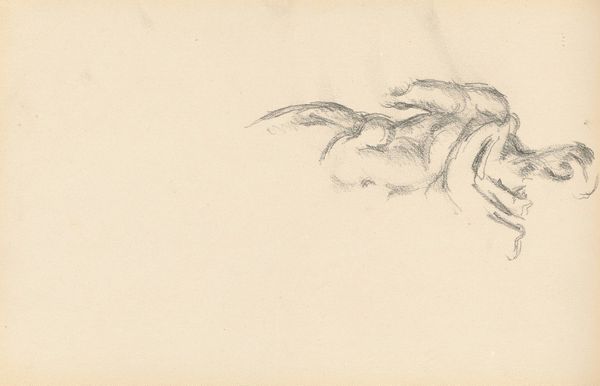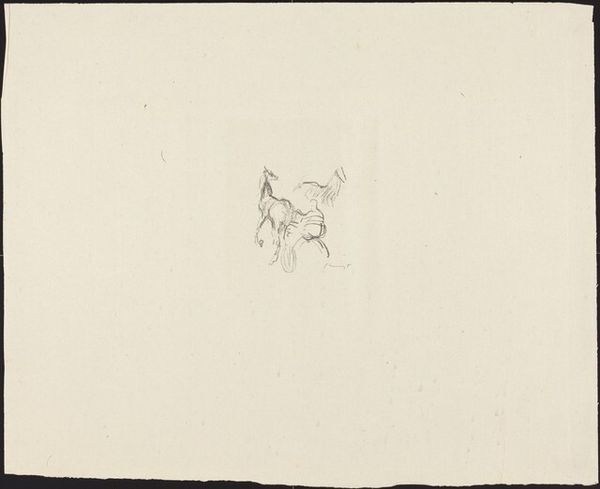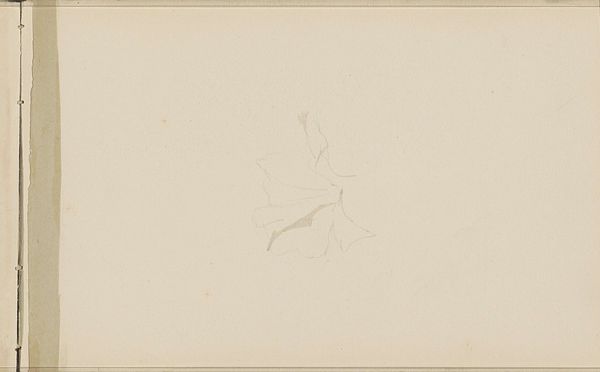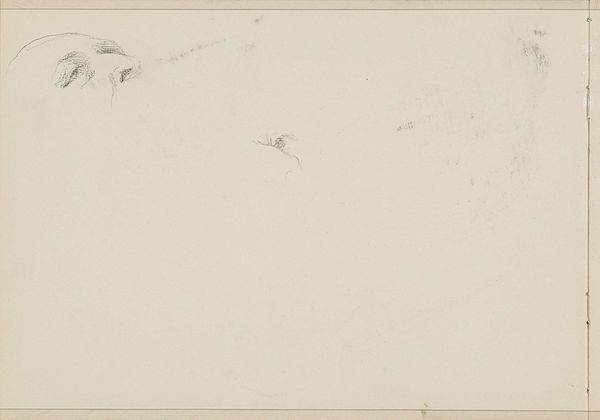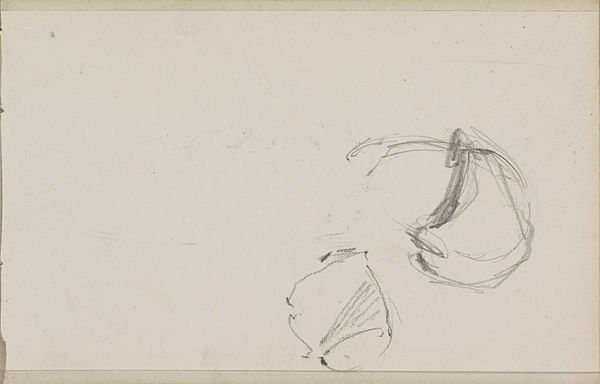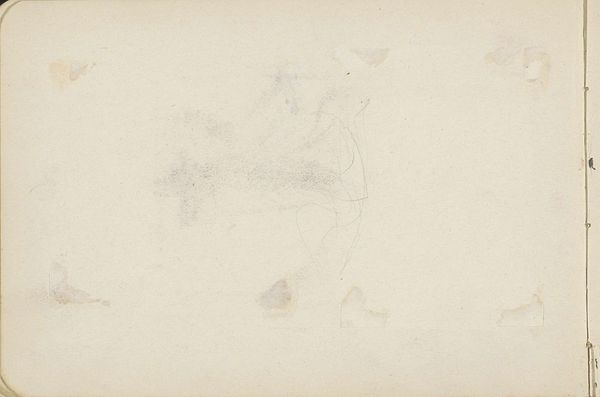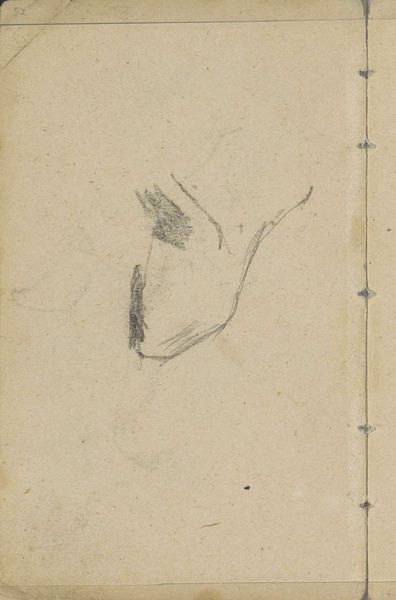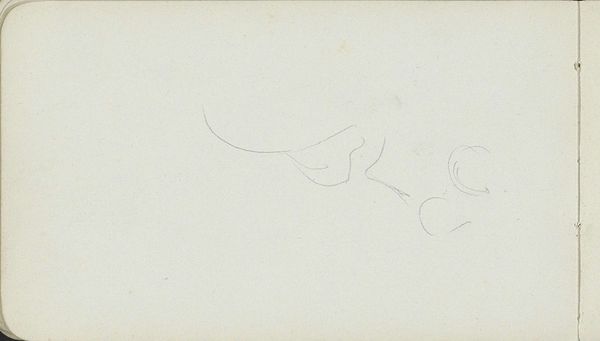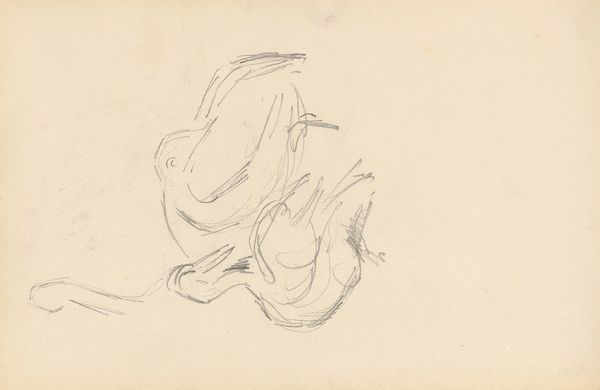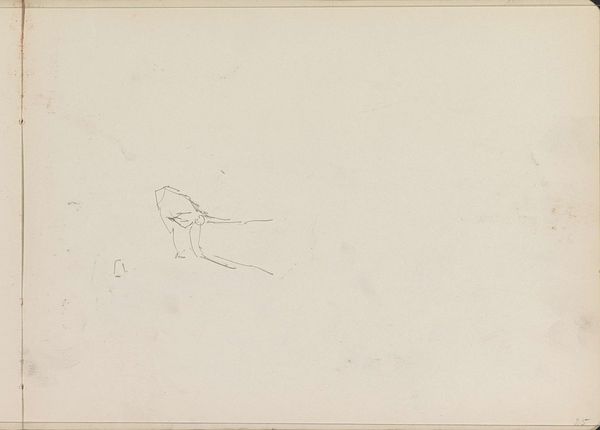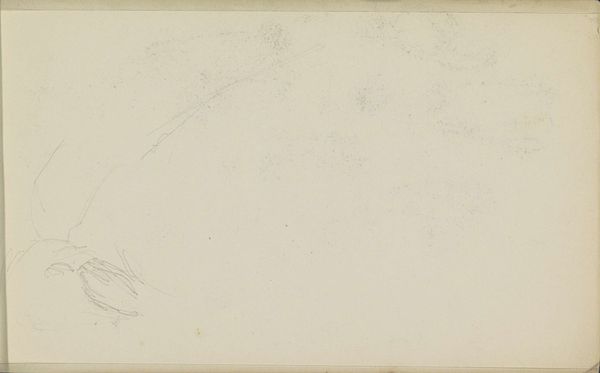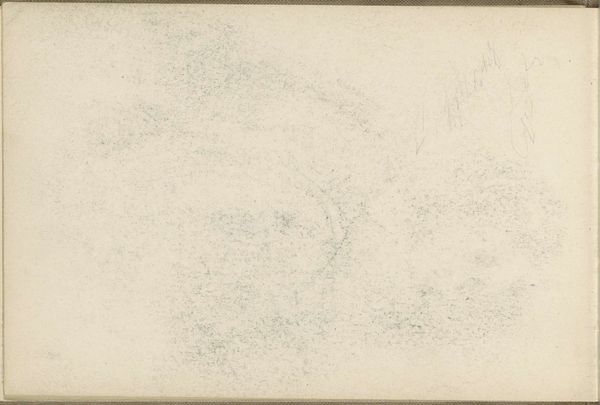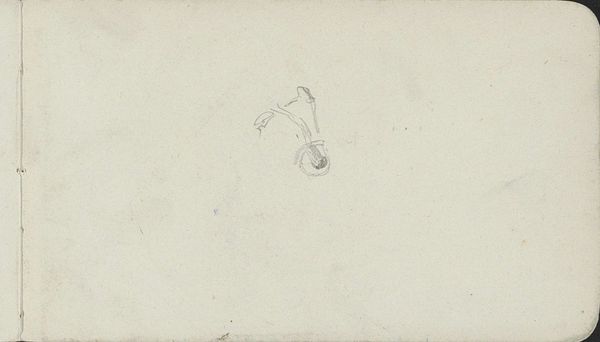
drawing, pencil, graphite
#
portrait
#
pencil drawn
#
drawing
#
impressionism
#
pencil sketch
#
figuration
#
pencil
#
graphite
#
academic-art
Copyright: Public Domain: Artvee
Curator: What catches my eye first is the starkness of the image, and how very unfinished it feels. There's such vulnerability in leaving so much space... what are we even looking at? Editor: We're viewing Paul Cézanne's "Study of ‘The Roman Orator", executed between 1883 and 1886. It’s a pencil and graphite drawing. To me, it's very interesting to think of the means through which such preliminary sketches survive when presumably so many do not. The materiality of the paper itself speaks to archival practices. Curator: I like that perspective; archival survival is part of its inherent story. What's left of the sketch is just so gentle – barely-there outlines capturing a figure, floating somewhat awkwardly on the page. There is a ghostly quality about how it is both present, but incomplete. Editor: Exactly. One considers the role that sketching played in Cézanne's process. Not just for studies, but a part of the wider academic process through which art became not just an expressive force, but a commodified object bought, sold, and archived according to systems of value production. How this artwork is received changes with this consideration. Curator: Thinking about that, you are right that the sketch could easily have been swept off the table to the trash bin and lost. In a way, by its very presence, its continued existence asks, "Why *this* one?". Is there something within the work itself or externally assigned that designates what is "art"? Editor: Precisely. The materiality allows a way into understanding how this becomes an artwork we appreciate beyond it merely being a pencil sketch, how value is manufactured within these contexts of production. The paper, the graphite, and ultimately, the archival decisions which allows us to access this artwork. Curator: I find myself wanting to see the imagined complete work—but perhaps, as we have both considered, its raw state has something greater to offer, precisely because it is not complete. Editor: Absolutely, and the artwork remains incomplete precisely because of systems that grant the unfinished sketch a new form of completeness through which our dialogue becomes a critical engagement with its value as an archival object.
Comments
No comments
Be the first to comment and join the conversation on the ultimate creative platform.
